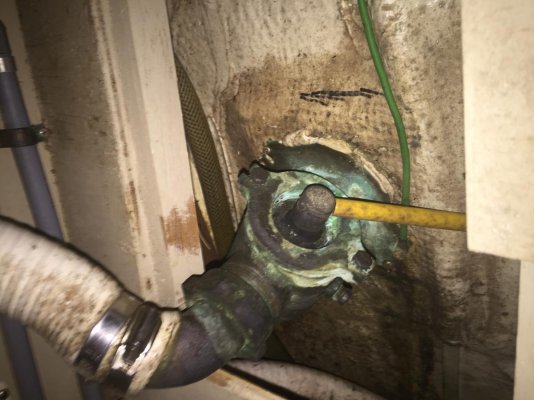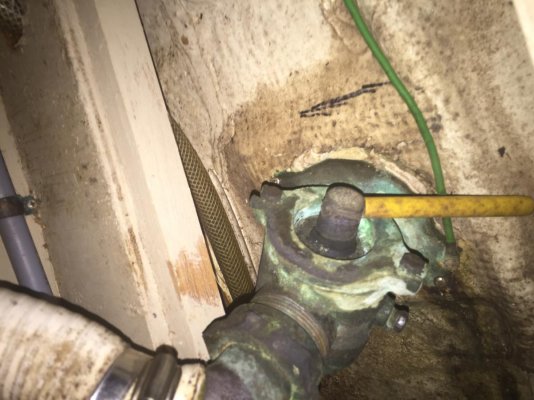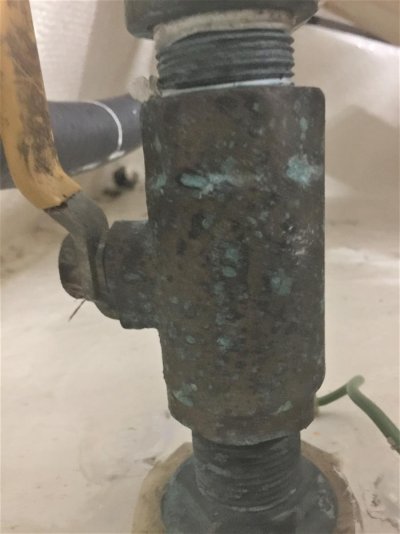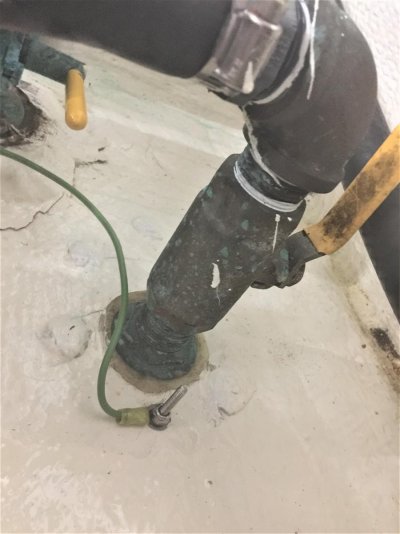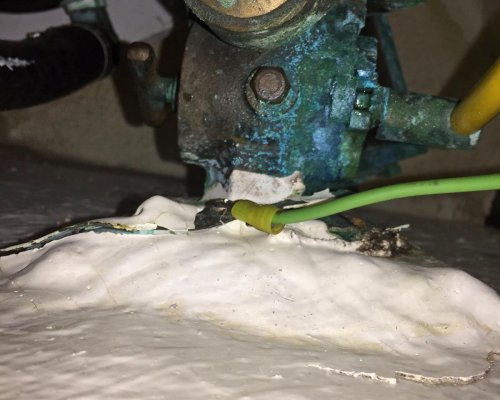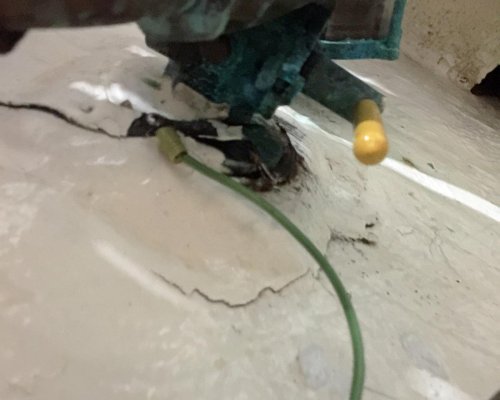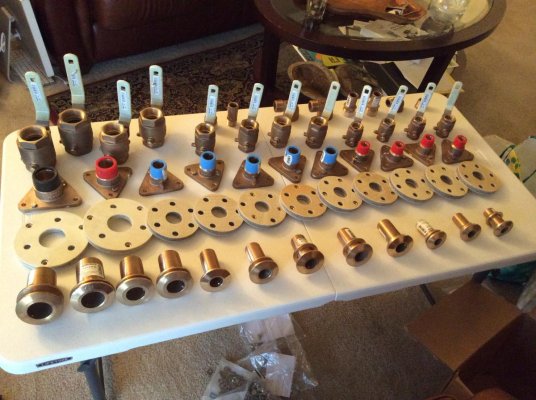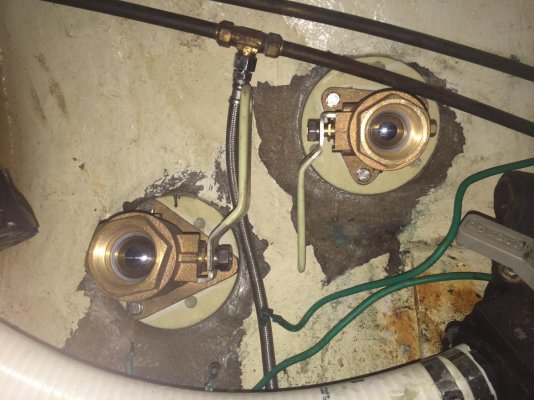firstbase
Guru
- Joined
- Nov 6, 2016
- Messages
- 1,644
- Location
- United States
- Vessel Name
- Black Eyed Susan
- Vessel Make
- Grand Banks 42' Classic
Two more seacocks that I need to identify in order to service. not the greatest pictures but maybe enough for you experts to identify. First two pics are of the seacock in the head. Any idea on model number or what I need to service? Rubber plug or bronze ball? The second two pics, the longer tall one, is leading to the SA1000. Any idea on model number or what I need to service it?
I believe both are 1" and should be circa 1987. Everything else is Groco so imagine these are too?
Appreciate everyone putting up with my newbieness. Thanks!
I believe both are 1" and should be circa 1987. Everything else is Groco so imagine these are too?
Appreciate everyone putting up with my newbieness. Thanks!
Attachments
Last edited:

